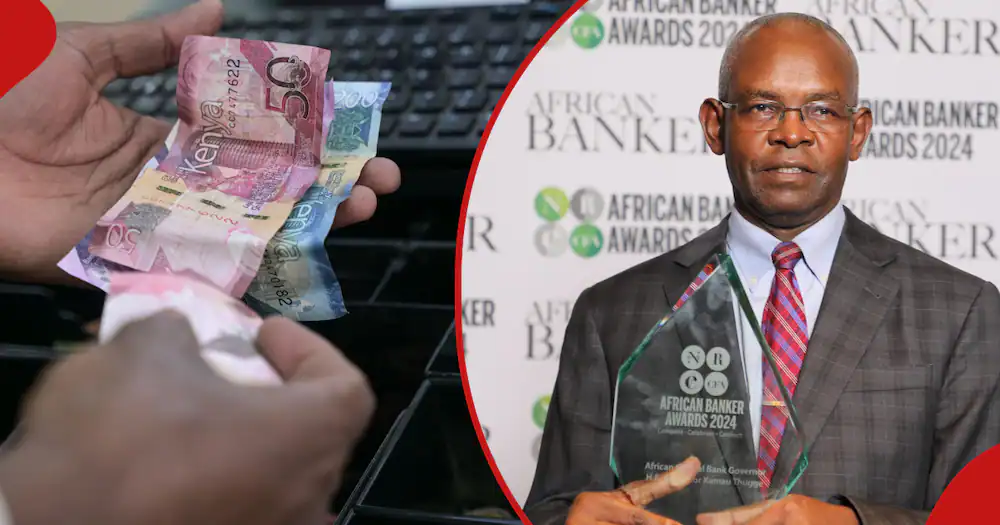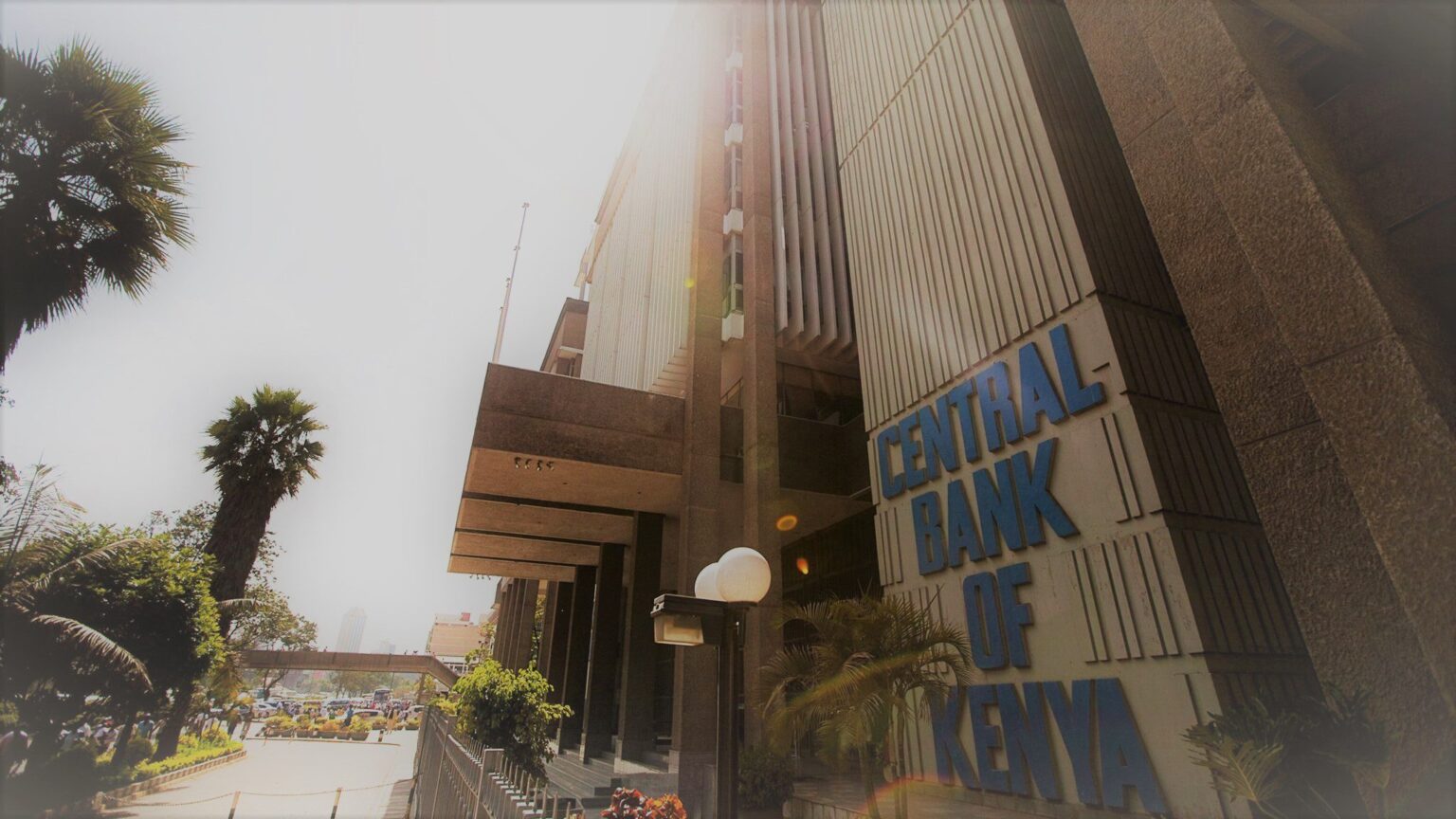-
- (CBK) retained its base lending rate at a high of 13 per cent for the second time.
- This is the highest rate in 12 years, as the apex bank continues implementing monetary policies to manage stubborn inflation.
- According to CBK data, the country’s borrowers had defaulted on about $4.8 billion as of April, the highest in 18 years, due to the tough credit market.
Central Bank of Kenya (CBK) retains high interest rates
Central Bank of Kenya (CBK) retained its base lending rate at a high of 13 per cent for the second time driving the borrowing costs in Kenya to remain high for at least the next two months.This is the highest rate in 12 years, as the apex bank continues to implement monetary policies intended to manage the stubborn inflation, which slightly increased to 5.1 per cent last month from five per cent in April.
- The base-lending rate means commercial banks will continue extending loans at higher interest rates, as high as 25 per cent. Those with poor credit scores (risky borrowers) are either locked out of the credit market or have to pay the highest rates.CBK’s Monetary Policy Committee raised its rates in February from 12.50 per cent, which had been in place since December when they went up from 10.50 per cent.
The CBK’s decision comes as global growth continues to recover, supported by stronger-than-expected growth in the United States and resilient growth in some large emerging market economies, particularly India.
However, the major risks to the global growth outlook remain the escalation of geopolitical tensions and the persistence of higher interest rates.
Global inflation has moderated, but some stickiness has persisted in the advanced economies. Food inflation has declined with improved supply of essential food items, particularly sugar and cereals.
On the other hand, international oil prices have moderated due to reduced risk premiums from the Middle East conflict and improved supply by non-OPEC+ oil producers.
However, freight costs have remained high on account of longer transits by shippers to avoid possible attacks on vessels sailing in the Red Sea by the Houthi Rebels, who have since December launched attacks, disrupting global trade that passes through the Red Sea and Suez Canal.
In Kenya, overall inflation remained broadly unchanged at 5.1 per cent in May 2024, the mid-point of the target range.
Food inflation stood at 6.2 per cent in May compared to 5.6 per cent in April as prices of critical non-vegetable food items, mainly maize, sugar, and wheat flour, declined following improved supply.
Fuel inflation declined to 7.8 per cent in May from 8.3 per cent in April, partly reflecting a downward adjustment in pump prices and lower electricity prices.
Non-food non-fuel (NFNF) inflation eased to 3.4 per cent in May from 3.6 percent in April, reflecting the impact of monetary policy measures.
“Overall inflation is expected to remain stable around the mid-point of the target range in the near term, supported by the stable exchange rate, improved food supply attributed to favorable weather conditions, stable fuel prices, and the impact of monetary policy actions, which continue to filter through the economy,” CBK governor Kamau Thugge said.
“The Monetary policy committee (MPC) noted that its previous measures have lowered overall inflation to the mid-point of the target range, stabilised the exchange rate, and anchored inflationary expectations. The Committee further noted that the Non-food non-fuel inflation has remained sticky in the recent months, and that interest rates in the major economies are expected to remain higher-for-longer due to the stickiness of inflation,” Thugge noted.
Read also: Cost of borrowing in Kenya on a 12-year high amid tough economic times.
Highest loan defaults

High interest loans persist.[Photo/Tuko] -
The high cost of credit comes amid continued high default rates, as the ratio of gross non-performing loans (NPLs) to gross loans stood at 16.1 per cent in April 2024, compared to 15.5 per cent in February. Even so, CBK maintains that the banking sector remains stable and resilient, with solid liquidity and capital adequacy ratios.
According to CBK data, the country’s borrowers had defaulted on about $4.8 billion as of April, the highest in 18 years, due to the tough credit market.
Increases in NPLs were noted in the agriculture, real estate, tourism, restaurant and hotel, trade, and construction sectors.
This has forced banks to continue making sizable provisions for the NPLs in anticipation of defaults.
Growth in commercial bank lending to the private sector stood at 6.6 percent in April 2024, compared to 7.9 per cent in March. This partly reflects exchange rate valuation effects on foreign currency-denominated loans following the appreciation of the shilling.
However, this reflects low credit extension to the private sector, which is a recipe for slowing economic activities.
Growth in local currency-denominated loans stood at 14.3 per cent in April, with foreign currency-denominated loans, which account for about 26 per cent of total loans, contracting by 14.2 per cent.
The MPC, however, the top decision-making organ at the central bank, noted that the new monetary policy implementation framework adopted on August 9, 2023, has resulted in improved interbank market functioning, narrower interest rate spreads with reduced market segmentation, and improved monetary policy transmission.
To enhance the effectiveness of the monetary policy implementation framework, the MPC considered and approved a recommendation to review the width of the interest rate corridor around the Central Bank Rate (CBR) from the current ±250 basis points to ±150 basis points.
“In line with this review, the Committee also approved a recommendation to adjust the applicable interest rate on the Discount Window from the current 400 basis points above CBR, to 300 basis points,” Thugge noted.
A discount window is a central bank lending facility to help banks manage short-term liquidity needs.
Read also: Kenyan Shilling to Reach Sh138 Against The Dollar by the end of June -Experts.
Short-term outlook
The May 2024 Agriculture sector survey, conducted before MPC meeting, shows that most respondents expect inflation to either remain unchanged or decrease in the next three months. This is due to the anticipated increase in food supply following favorable weather conditions, stability of the exchange rate, and easing fuel prices.
The CEOs and Market Perceptions Survey revealed sustained optimism on business activities and economic growth and development prospects for the next 12 months.
The optimism was attributed to agriculture’s expected continued good performance, resilient services sectors, and a stable macroeconomic environment.
Nonetheless, respondents expressed concerns about fiscal policy measures, high interest rates, and the potential impact of geopolitical risks on the economy.
Read also: Brace for High Interest Rates for a Longer Period, World Bank Warns Kenya.
Current account deficit
The country’s current account deficit is estimated at 4.2 per cent of GDP in the 12 months to April 2024.[Photo/Adobe stock] -
The country’s current account deficit is estimated at 4.2 per cent of GDP in the 12 months to April 2024, down from 4.8 per cent in a similar period of 2023. Based on growing exports, it is projected at 4 per cent of GDP in 2024, even as Kenya remains a net importer.
Goods exports increased by 2.9 per cent in the 12 months to April 2024 compared to a similar period in 2023, reflecting increased exports of agricultural commodities and re-exports.
Exports of tea, vegetables, and fruits increased by 5.6 per cent and 10.5 per cent, respectively, while re-exports were 38.1 per cent higher in the period.
CBK data indicates that exports were 15.2 per cent higher in the first four months of 2024 than in a similar period in 2023.
Goods imports declined by 7.7 per cent in the 12 months to April 2024 compared to a similar period of 2023, reflecting lower imports across all categories except machinery and transport equipment.
However, imports were 2.2 per cent higher in the first four months of 2024 compared to a similar period in 2023. Tourist arrivals improved by 27.2 per cent in the 12 months to March 2024 compared to a similar period in 2023, and were 22 per cent higher in March 2024 compared to March 2023.
Remittances increased by 11.9 per cent to $4.46 billion in the 12 months to April 2024, compared to $3.98 billion in a similar period in 2023.
“The Central Bank of Kenya (CBK) foreign exchange reserves, which currently stand at $6.97 billion (3.63 months of import cover), has continued to provide efficient cover and a buffer against any short-term shocks in the foreign exchange market,” CBK said.
Read also: Kenya’s economy posted 5.6 per cent GDP growth in 2023
Trending
- Kenya’s procurement regulator to amend lowest bidder rule for state contracts
- From Nairobi to Dar: Tanzania Kariakoo traders borrow a leaf from Kenya in anti-tax strike
- E-commerce surge poises Kenya for economic leap
- Top Destinations for Kenyan Professional Workers Seeking Jobs Abroad
- Kenya’s $2Billion Eurobond Cleared Three Days to Deadline
- Kenyan Police Head to Haiti to Fight Gangs
- Why Tanzania is setting up a 22-storey chancery building in Nairobi
- How Gulf countries are turning Eastern Africa into a new nexus of global trade
Costly loans to persist as Central Bank of Kenya (CBK) retains high lending rates

The Central Bank of Kenya.[Photo/co-opnews.com]
Martin Mwita
Martin Mwita is a business reporter based in Kenya. He covers equities, capital markets, trade and the East African Cooperation markets.